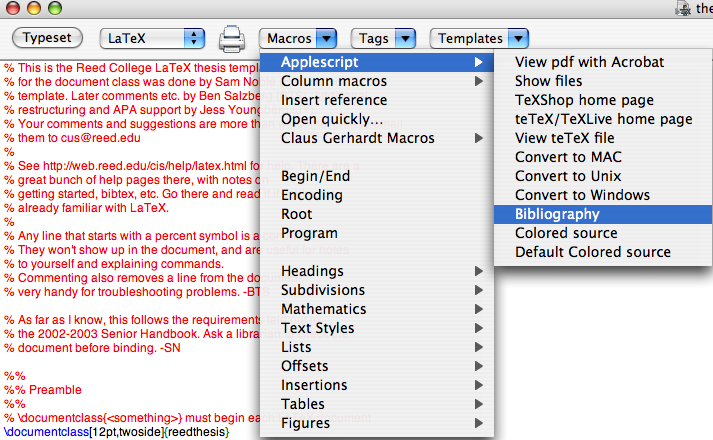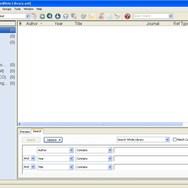
Then I have used a separate CSS file to define the formatting of each field. → Fred Richard Bloggs, Tim Smith, Ronald Percival Jonesįor the formatting of the fields, I have set each field as a or with a class or id.These modifier keys are also listed at the Template Keys page in the manual.
Use bibdesk file in latex full#
One example is the Tag where the full name or an abbreviated name can be chosen, and the "and"s between authors can be replaced by commas. It is also possible to apply modifiers to the field Tags in order to format the contents. A list of the different kinds of Tag is given in the Template Keys page in the manual. For example, will be replaced by the contents of the "Title" field in the BibDesk database. They are parsed by BibDesk to include the relevant parts of the BibDesk database in the html file. These entities are known as Template Tags.
Use bibdesk file in latex series#
Opening this file, you will see that the template files comprise a series of items enclosed in signs, the same as those used in HTML to enclose formatting tags, but starting with an extra $. The formatting of the individual entries into the html file is done using the htmlItemExportTemplate.html file. Looking at the htmlExportTemplate.html file first, this is a relatively simple html document, with a standard header, a link to the external CSS file, and a single "content" div in the body. Control-click or right-click on a file in this list to either reveal it in a Finder window, or open the file with your favorite viewer or editor. Click on the triangle to the left of "Default HTML template" to reveal the list of template files for this template. You can also find these template files from the Templates pane in BibDesk's Preferences. Generally, only the first of these template files is required. For HTML export, there are 3 template files: htmlExportTemplate.html, htmlItemExportTemplate.html and htmlExportStyleSheet.css. You can find a set of default template files in the folder ~/Library/Application Support/Bibdesk/Templates. The file extension should change to reflect the output format, i.e. This also leads to a save box, but with the addition of a dropdown menu at the bottom of the save box where a template can be selected. In order to use a non-default template the last menu item "Using Template" should be selected. A standard save box will then open, allowing you to choose the name of the html file, and also the location on your hard drive. To use the default template, select the "HTML" item from the export submenu.

You can either export the whole database, or just the references which you have selected. The Export submenus can be found in the File menu of BibDesk. Apart from export, templates are used for the pretty printed previews in the main window, copying, and services, and moreover can be used for dragging and emailing. Other Uses for TemplatesīibDesk uses templates in various places. Thus an HTML template can also be used as a template for export to these programs.īelow, there is a list of custom templates which have been written by BibDesk users for further discussion or to announce that you have posted a new template here, use the BibDesk-users mailing list.

Beyond their obvious application as files for web bibliographies, HTML is a common import format in many word processors, such as Apple's Pages and TextEdit, Microsoft Word et al. This page will mainly concentrate on describing the export to HTML files.
Use bibdesk file in latex how to#
This page will expand upon the information in the manual, and describe how to create templates to meet your own needs, and how to set up BibDesk to use your own templates. In fact, it is possible to write a custom export template for any structured text format! You can find a brief explanation of the use of templates for export in the manual, also included in the BibDesk Help Menu.

However, BibDesk can also export a whole database, or a selection of the database, to a number of other formats, including HTML, RTF, and the Word DOC format. For more information see the tocbibind package documentation.BibDesk provides a convenient means to create a database of references to include in a bibliography using the standard LaTeX/BibTeX route. Be careful, it will also add other elements like the Index, Glossary and list of Listings to the table of contents.

To the preamble will print the "References" or "Bibliography" in the table of contents, depending on the document type. If you want the bibliography to be included in the table of contents, importing the package tocbibind in the preamble will do the trick: bib file will be displayed, it depends on the bibliography style set in the document.Īdding the bibliography in the table of contents


 0 kommentar(er)
0 kommentar(er)
